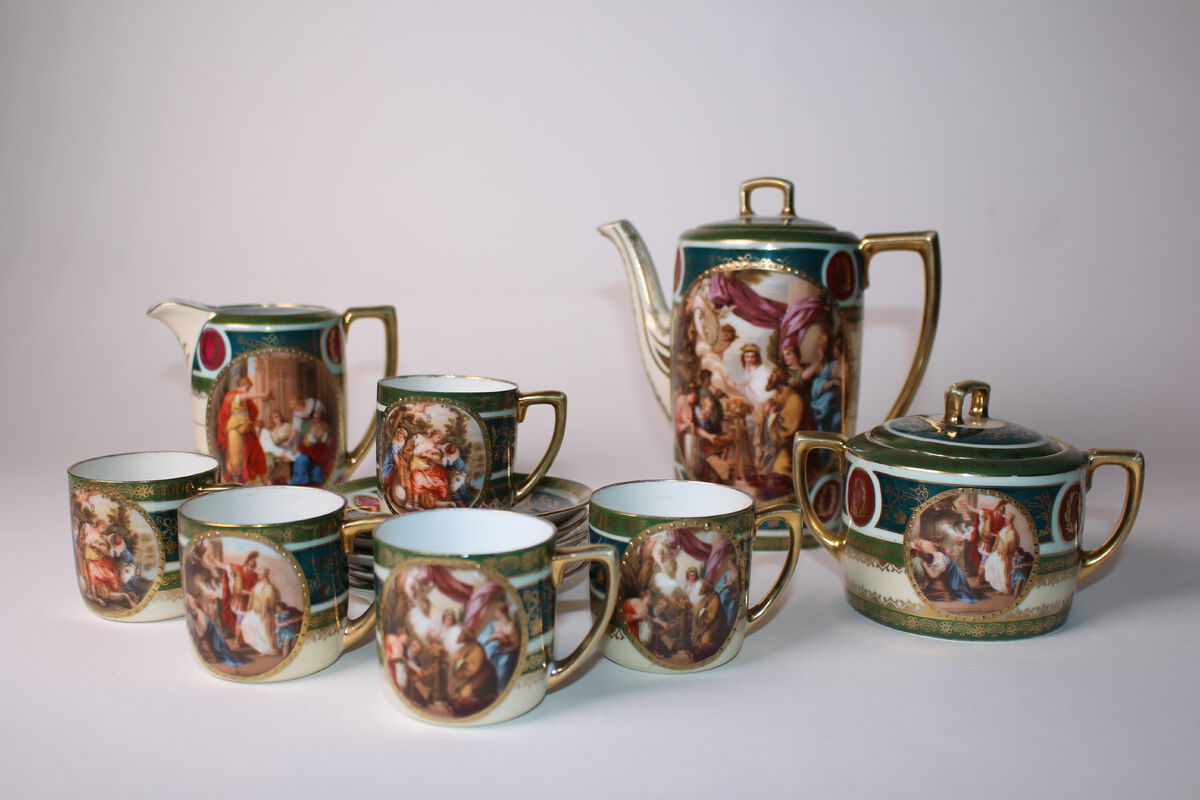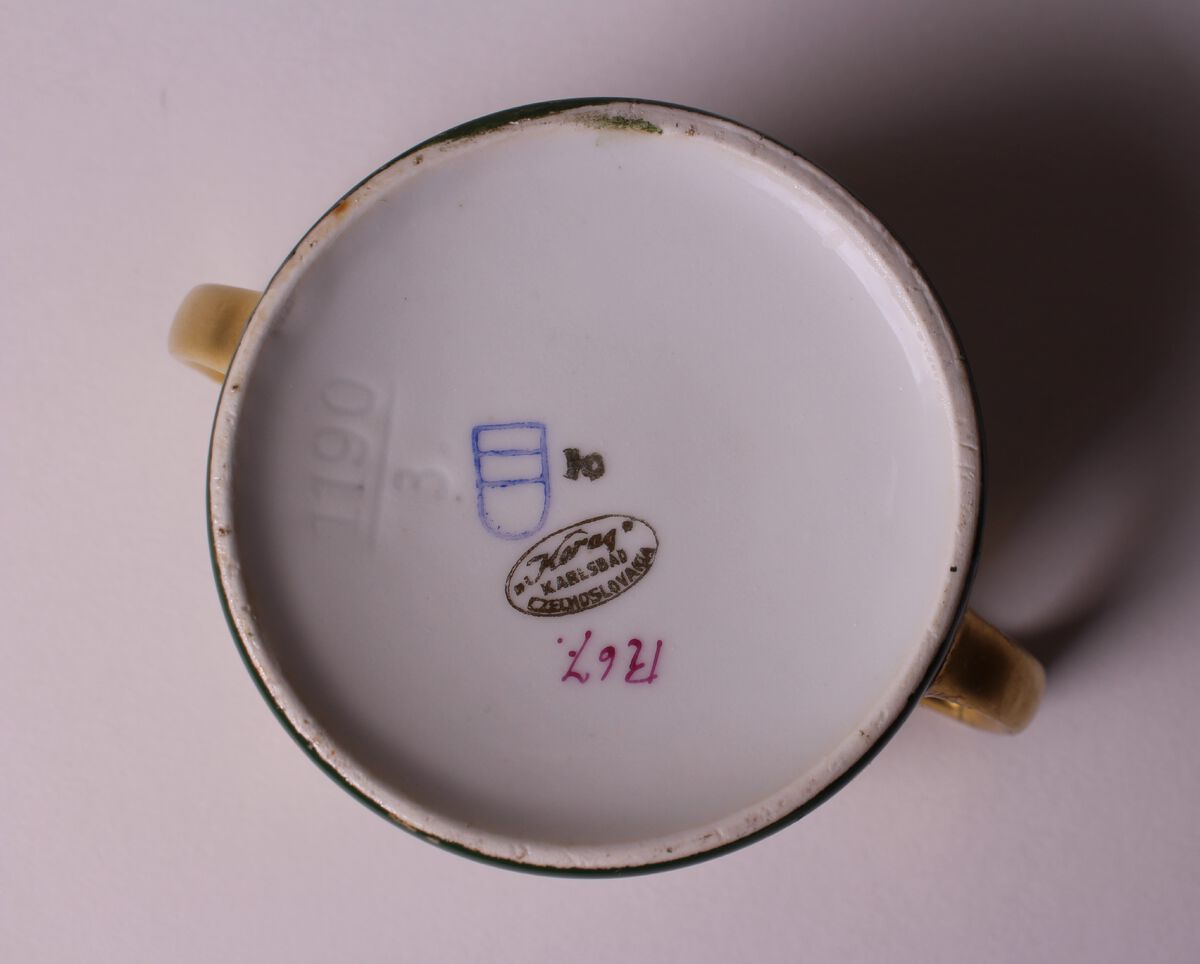This porcelain tableware set was given to the Vanderhoydonck family of Wijchmaal in Limburg for safekeeping in 1941. After the war, it was never retrieved. We still have no idea who the owner was.

Between 21 December 1940 and 12 February 1941, the Nazis deported 3,293 ‘foreigners’ (mostly Jews) from Antwerp to Limburg. Why they chose to do this is not entirely clear, but it was probably a precautionary measure to protect the port of Antwerp.
On 18 January 1941, 20 people got out of the convoy at Wijchmaal station. They were housed in two vacant houses in this small village near Hasselt. Although they received food and clothing from ‘Winterhulp’, this was far from sufficient. Jewish women therefore reached out to local farmers for assistance. The Vanderhoydonck family who had a farm were one of several families to donate food to the Jewish families who had been relocated to Wijchmaal.
In early spring 1941, these Jewish families were rounded up again. They had no idea what would happen next. Before her departure, a Jewish woman with a child gave the tableware set for safekeeping to sisters Leen and Mie, and their brother Tinus Vanderhoydonck.
The woman’s name is not known, but she did mention that she came from Vienna and would return after the war to collect the tableware. Unfortunately, she never returned.
Frie Ceyssens inherited the set. He was a cousin of the Vanderhoydoncks and grew up on their farm. He took the set to Hasselt where he kept it in a special wooden cabinet. Frie was convinced that the Jewish owners had been swallowed up in the Nacht und Nebel of the German concentration camps. But later it would transpire that he was wrong. After the death of Frie Ceyssens and his wife Miet Keunen, his children gave this precious tableware for safekeeping to Kazerne Dossin for further research.
The research team at Kazerne Dossin set about searching for the Jewish families with children from Vienna who resided in Wijchmaal in 1941. This allowed the research team to narrow the search down to two Jewish families: the Koral-Vogel family or the Muhlstein-Ullmann family. Of the 20 Jews in Wijchmaal, only these two families survived the war. Although the research team was able to trace their next of kin, we could not determine the owner with certainty.
The Koral-Vogel family
Father Arbe Koral was born on 7 October 1903 in Lowoczny. He left Vienna for Belgium with his wife Rachela Vogel (born 30 August 1909 in Kolomea) in 1939. At the end of 1940, the couple and their infant son Kurt lived in Berchem (24, Wasstraat). In early 1941, they were sent to Wijchmaal in Limburg, where they may have given the tableware set to the Vanderhoydoncks for safekeeping. Their 4-year-old son survived the war in hiding at the convent of the Soeurs de la Miséricorde in Heverlee. After this, Arbe and Rachela lived in different places in Brussels. They survived the war after going into hiding.
The family left for the United States after the war. Their son Kurt grew up and became a doctor. He died on 12 October 2010.
De familie Muhlstein-Ullmann
Father Aron Muhlstein was born on 9 December 1890 in Kolbuszowa. He and his wife Emma Ullman (born 9 April 1902) lived in Vienna, where he had two successful clothing and jewellery stores. The family was very wealthy. They even had several servants.
After the Anschluss in 1938, however, he lost everything. The couple sent their two oldest children, Herbert and Erika, on a children’s transport from Vienna to Britain in the spring of 1939. That is how they survived the war.
Aron and his pregnant wife Emma then emigrated to Antwerp, Belgium, where they had a third child, called Renée. From early 1940 they lived at 56, Bloemstraat in Borgerhout. In early 1941, they were also sent to Wijchmaal in Limburg, where they may have given the tableware set to the Vanderhoydoncks for safekeeping. Renée survived the war in hiding in the convent of the Soeurs de la Miséricorde in Heverlee. In 1943, the couple had a fourth child in Brussels where they also survived the war.
Today, the descendants of this family live in France and the UK.
The almost complete tableware set of the ‘Kerag’ brand consists of a coffee pot (or teapot), a milk jug, a sugar bowl, and five cups with saucers. Each piece depicts scenes from the Old Testament.




